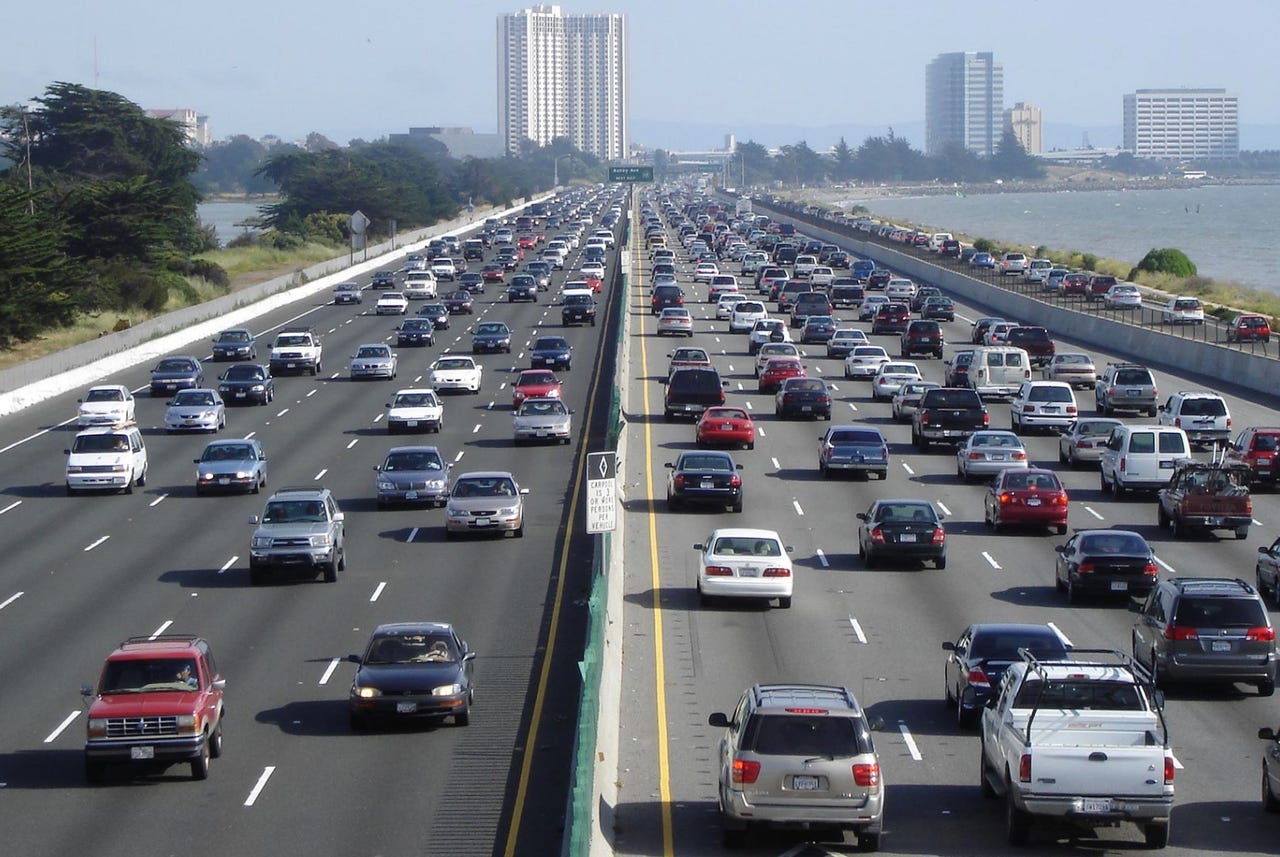Self-driving car owners could become the traffic elite through Hyperlanes


Featured
A proposed lane for self-driving cars only could help the infrastructure cope with the technology -- but could also promote a traffic-dodging service for those that can afford it.
The Hyperlane, a proposed transformation of existing highways into lanes reserved purely for autonomous cars, delivery trucks, and buses, is the dream of UC Berkeley graduate students Anthony Barrs and Baiyu Chen, co-founders of the US Hyperlane company.
The so-called Hyperlanes would be controlled by a central computer, as reported by the BBC, and would allow self-driving vehicles to travel at speeds over 100mph (160kph).
According to co-founder Chen, existing lanes would provide the real estate necessary to develop the smart roads, which will also potentially be used for ridesharing services, parcel deliveries, and autonomous buses.
"We were inspired by high-speed rail in Japan," Barrs told Fortune. "We realized we couldn't exactly do that in America, so we started to deconstruct the high-speed rail experience and that's when we realized we could remove the tracks and deploy new, emerging technologies like autonomous vehicles."
Inspired by the Japanese bullet train, the Hyperlane will slot in autonomous cars that join via a slip road or junction, take over the controls through the central computer, and push the vehicle forward to its destination.
Sensors will monitor the flow of traffic and adjust speeds when necessary.
"You would use access stations in your local neighborhoods and once you enter the station, your car would start driving themselves and they would launch into Hyperlane," Chen told the BBC. "After that point the car would be able to drive itself and you can just sit back and continue sipping your coffee or checking your phone."
The project will cost an estimated £9 million ($11.4 million) per mile, and so, how will cities interested in adopting these roads pay for them? The answer lies within surge pricing, where customers will pay for the right to use the road.
Hyperlane says the revenue will "ease congestion," but if existing roads are used to accommodate a system where self-driving cars can speed along at 100mph, this could also have a knock-on effect when it comes to current congestion for the average commuter.
We only have so much space on our highways, and without creating new lanes, cutting off access to roads for the majority of commuters will likely only cause even more of a buildup.
While the claims of "easing congestion" may not stand up when you consider the usage of space already catering to high traffic in populated areas, on the other hand, requisitioning this space and separating autonomous technology from traditional vehicles could make the adoption of this technology -- which doesn't always work so well on roads where human error is a factor -- an easier transition.
American roads, crumbling and often in disrepair with constant use, are not exactly in the greatest condition to welcome new travel technologies. Should this concept become reality, the transition and disruption could cause increased misery for already-gridlocked commuters -- but should fresh highways be built up from scratch in areas which allow new construction, the Hyperlane may, indeed, ease congestion.
The balance between using existing infrastructure in urban areas and, perhaps, carving fresh roads will decide how the Hyperlane could become a popular method of travel in the future and a way to reduce congestion, or simply a way for travelers who can afford it to get to their destinations more quickly -- to the detriment of the average commuter.